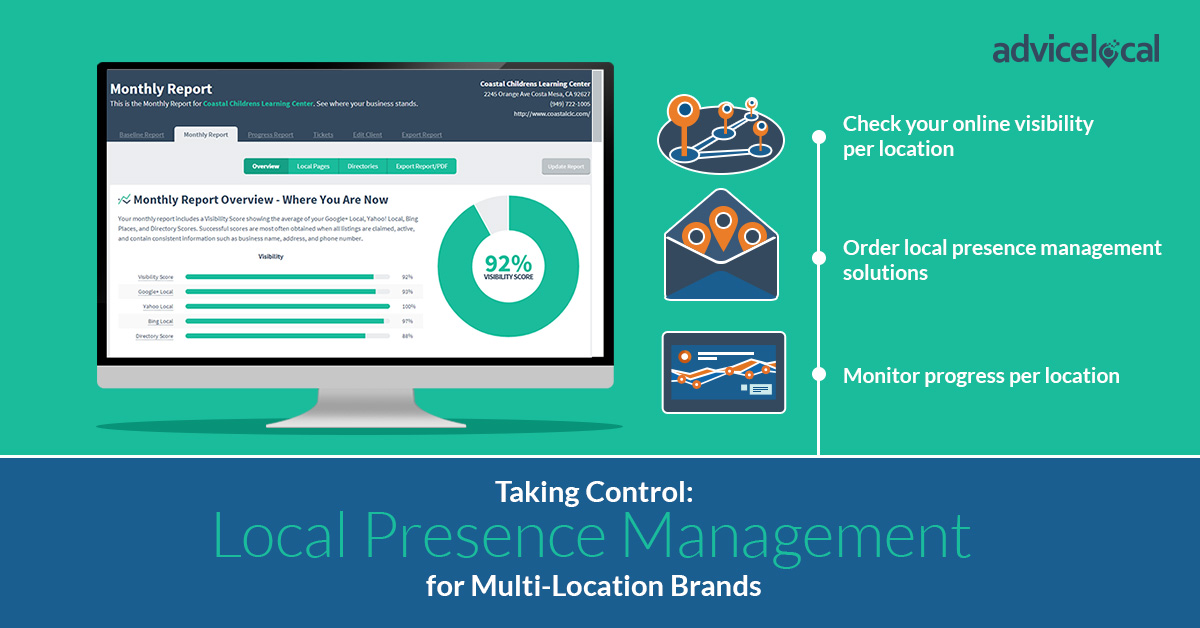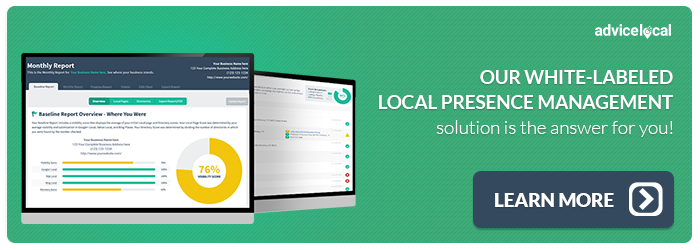Did you know that 73% of consumers lose trust in a business if it has inconsistent location data? Bad data is a big issue for businesses of all sizes, and can get even trickier for brands with more than one location.
Even if only some locations are misrepresented online, having outdated, inconsistent citations or inaccurate information on the web can have a significant impact on the brand’s credibility with consumers. Today, I’m going to explore some of the common issues related to multi-location brands and address how brands can take control of their local presence for each location.
The Most Common Citation Problems for Brands with Multiple Locations
Managing local presence can be complicated for one location. When a brand has multiple locations, the difficulty increases by the number of locations they have. One of the major challenges of having more than one location is maintaining citation consistency across all online listings. Some of the biggest challenges for brands include:
- Discrepancies in the way the location names, addresses, and phone numbers (NAP) are displayed online.
- Name changes due to mergers, acquisitions, or rebranding.
- New phone numbers or addresses due to location changes or closures.
- Duplicate or incomplete listings resulting from lost passwords or limited account access.
Local Presence Management Solutions for Multi-Location Brands
1. Clean Up Local Citations
Inconsistent local citations are bad for SEO and bad for business. It’s extremely important for multi-location brands to monitor their local citations for accuracy. Dirty citation data can cause real problems for brands and their customers. In fact, 67% of consumers reported that if they get lost en route, they lose trust in a brand.
Search engines look for consistent NAP across the web to confirm that a company or brand is credible. We recommend building up as many high-quality local citations as possible for each location. Taking the time to optimize business listings by ensuring the data is fully accurate and complete is not only important, but a must.
2. Claim and Optimize the Google Business Profile
Each location where the brand serves customers should have a unique listing on Google Business Profile (formerly Google My Business). Depending on whether or not Google has generated listings for the locations based on information found online, the brand should claim or create listings for each location. Here’s a how-to guide on claiming an existing Google Business Profile.
There are several steps brands can take to manage and optimize its Google Business Profile, including:
- Verifying each location
- Adding unique images for each location
- Replying to local customer reviews
- Updating the hours of operation, NAP data, and other details specific to the location
3. Create New Citations on High-Quality Directories for Each Location
Creating local citations is simple in theory, but knowing where and how to get listed (as well as how to optimize those listings) can be a bit more difficult. Some directories are better quality than others, and it’s important to be able to recognize which directories are worth getting listed on.
In many cases, submissions to low-quality directories are not moderated, so anyone can get a listing. Often these sites are de-indexed in search engines, which means a low-quality citation won’t do any favors for the brand’s local presence. If a directory displays tons of ads or has a high number of outgoing links, it likely isn’t a high-quality citation source.
To get listed in a more reputable directory, someone from the brand will likely have to contact the website and answer a few questions to verify the listing information. Many directories allow brands to upload logos and write brief descriptions to provide more context.
This process is pretty time-consuming and ideally the brand would partner with a local presence management provide such as ours, Advice Local, and let’s us do the work for them.
4. Manage Local Customer Reviews
Whether a brand’s various locations are spread across the county or the country, it’s important to collect and manage customer reviews for each location (rather than just the brand as a whole). Remember to ask happy customers to write reviews so Google can display positive, relevant reviews alongside local search results.
Location-specific reviews allow the brand to improve SEO for each location and provides more applicable information for local consumers reading reviews online. Brands can use in-store or online strategies to get more reviews.
5. Improving Placement for Individual Locations in Search Results
For brands with multiple physical locations, it can be a challenge to place in proximity searches, especially if you only have one website and the address listed is for the main office. Having a single page on the website that lists all of the locations is not enough. Each location should have its own, unique landing page that includes the NAP data specific to that location – that is, the name of the location and a unique address and phone number.
It should also include a description for each location, local customer reviews, and any content that makes the page more original and unique to that specific geographic location, such as service areas and hours of operation.
Make sure each location page is included in the Sitemap submitted to Google so the search engine’s crawlers can easily find and index each page.
The simple truth is that multi-location brands require multifaceted solutions to local presence management.
Get in touch today and find out how Advice Local can help you take control.
Remember to come back each week for more advice from the #QueenofLocalSEO!





Does this apply to directory websites as well? Would it be advantageous for the directory owner to promote local presence management to customers without a website using the website fields to point back to their directory website (assuming each directory listing has its own unique page with NAP data)?
Chris, good questions! Definitely a directory owner promoting local presence management to their customers is a good idea and important. The directory should partner with a company like Advice Local on this adventure. Second question – “Would we recommend that the business owner use the directory listing URL (assuming it’s unique) as the website URL?” Directories change, owners of directories change, and the quality of directories change. Depending on the authority of the directory this could actually hurt the business in search vs. help. Ideally, the business would have their own website and within all directory listings, use that website URL. This sends a trust signal to search engines and points consumers to the website of the business to learn more information that the directory listing does not include. Hope this helps! Enjoy your day.